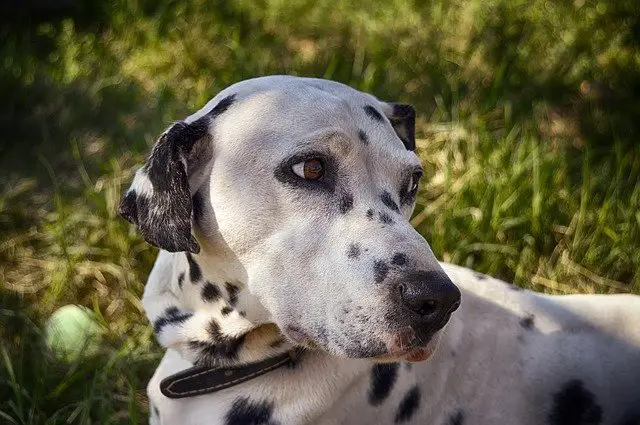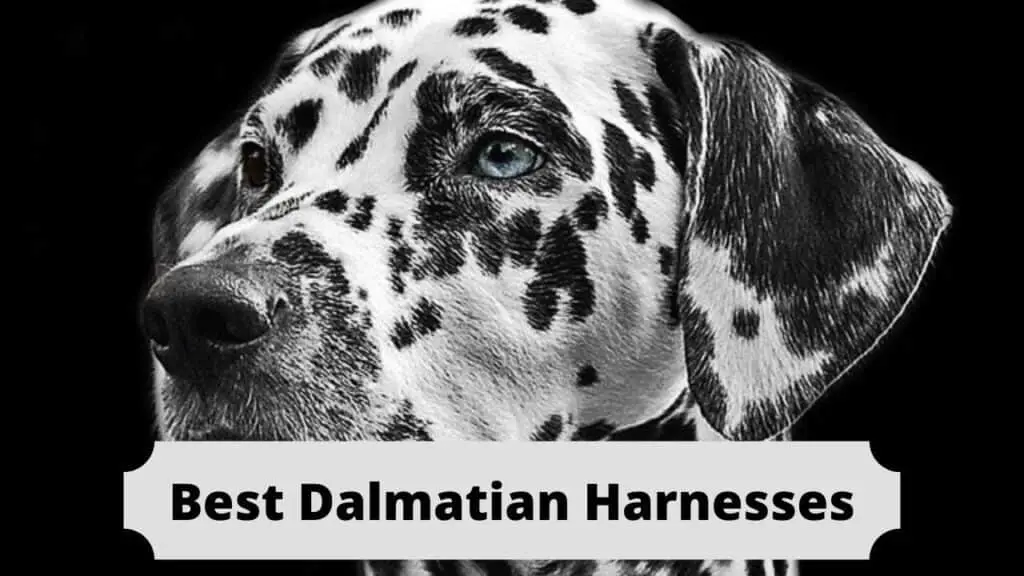In 2011, a dog with black-and-white spots was entered into Crufts. Her name was Fiona. This spotty 3-year-old dog was a crossbreed, the result of a cross between a Dalmatian and a Pointer. Fiona was created to bring health benefits to future Dalmatians.
Indeed, Fiona managed to eventually get registered as a pedigree Dalmatian with the Kennel Club. But, this caused outrage among other Dalmatian breeders, who saw Fiona as a mongrel rather than a true Dalmatian. So what is the difference between pure and impure bred Dalmatians?

How much does a pure Dalmatian cost?
As a puppy, a Dalmatian will typically cost anywhere from $300 to $3,000, although the typical price is more like $900. A show-quality Dalmatian will set you back a little more, costing upwards of $5000.
How can you tell if a Dalmatian is pure?
With that one-of-a-kind jovial, intelligent personality and their limitless energy, surely there’s no mistaking a true Dalmatian? However, there are a few ways you can make sure.
First of all, take a look at the dog’s spots and markings. A true Dalmatian is primarily white, with spots not necessarily black but can also be reddish-brown. The breed standard lays out that Dalmatians’ spots should be distributed across their entire body, ideally with no large patches. Some Dalmatians have blue or tricolored spots, but their coat will feel equally as silky!
Proper Dalmatians also have unique eye colors. A Dalmatian can only have black, dark brown, gray, or blue eyes. A true Dalmatian will shed their hair, too, if you begin to brush them.
If you still aren’t sure, you could get a home DNA testing kit for your spotty pooch. After taking the swab and sending it off, you’ll get a breakdown of the breeds that make up your dog within a few weeks.
For a quick way to identify whether a dog is a Dalmatian, take a snap with a smartphone app like Fetch or Google Lens.
You could also talk to the dog’s breeder. The breeder should be able to find you Kennel Club papers for both the dam and sire. A responsible breeder will also have the Dalmation parents health-checked before breeding them.
Are pedigree Dalmatians healthy?
Before breeding a pedigree dog, a responsible breeder will take that dog to the vet for health clearance. If the breeder discovers that their dog is carrying genes for health conditions that they may pass on to their offspring, the breeder should choose not to breed that dog.
And yet, it’s a well-known fact that mongrels are generally healthier than pedigrees. This is because they have a greatly larger gene pool than a purebred. This vast gene pool greatly decreases the risk of inheriting most diseases, leading to an increased quality of life, as well as a greater lifespan.
Though Dalmatians who carry genes for conditions like deafness will not be bred, all Dalmatians have high urinary uric acid. This puts the Dalmatian at extreme risk of developing highly painful and sometimes fatal health conditions related to the high uric acid.
What health conditions can a Dalmatian have?
In earlier articles, we touched upon the unique physiology Dalmatians currently have. This unique physiology puts them at risk of developing a number of health conditions. One of these conditions is urinary stones, or urolithiasis. Urolithiasis occurs because the Dalmatian actually has a unique urinary tract system.
Their urinary tract does not produce allantoin or urea like another dog’s would. Instead, a Dalmatian’s urine contains uric acid. The salts of the uric acid can form into stones. Urinary stones are painful to pass and may even lodge in a Dalmatian’s body!
A Dalmatian who has urolithiasis needs prompt veterinary treatment and diagnosis of the condition, since a urinary blockage can quickly turn fatal, not to mention how painful it is. Thankfully, always providing access to clean drinking water and food that is low in purines, such as Dalmatian-specific kibble can go a long way in preventing this condition.
You should also get into the habit of keeping a close eye on how regularly your Dalmatian pees, however, and whether they show any signs of pain while doing so.
Another health condition that may cause your Dalmatian to bite you is hip dysplasia. Like many other large breeds, a Dalmatian may be born with this condition. With hip dysplasia, a Dalmatian’s hip doesn’t fit in their pelvic socket. The condition can lead to a range of acute symptoms, or hardly rear its head at all.
Why shouldn’t you breed pure Dalmatians?
We mentioned how Fiona was bred to increase the health of future Dalmatians. When you keep breeding Dalmatians with more Dalmatians, they keep passing down the gene for increased urinary uric acid.
As we’ve just detailed, uric acid can lead to urinary stones. Though unlikely t o be fatal, urinary stones and other conditions associated with high uric acid can be very painful. Wouldn’t you want to prevent this for your Dalmatian if you could?
Fiona is a Low Uric Acid Dalmatian. This means backcrossed Dalmations like Fiona exhibit a 10-fold less urinary creatinine ratio compared to a standard Dalmatian. Currently on their 14th generation, these reduced uric acid pooches are now just as spotty and sleek as the standard Dalmatian, but with none of the health issues that usually plague the breed.
How many generations until a Dalmatian is purebred?
A dog can be considered purebred after they attain five generations of ancestors belonging to the same breed. Now on their 14th generation, the Reduced Uric Acid Dalmatians are thoroughly and purebred!
What percentage makes a Dalmatian purebred?
A Dalmatian is considered purebred if they are 87.5% Dalmatian or above. The Low Uric Acid Dalmatian progeny is 99.8% Dalmatian. So, though they were once crossed with a Pointer, the descendant Reduced Uric Acid Dalmatians can now be considered just as fully-fledged a Dalmatian as the “pure” Dalmatians.


